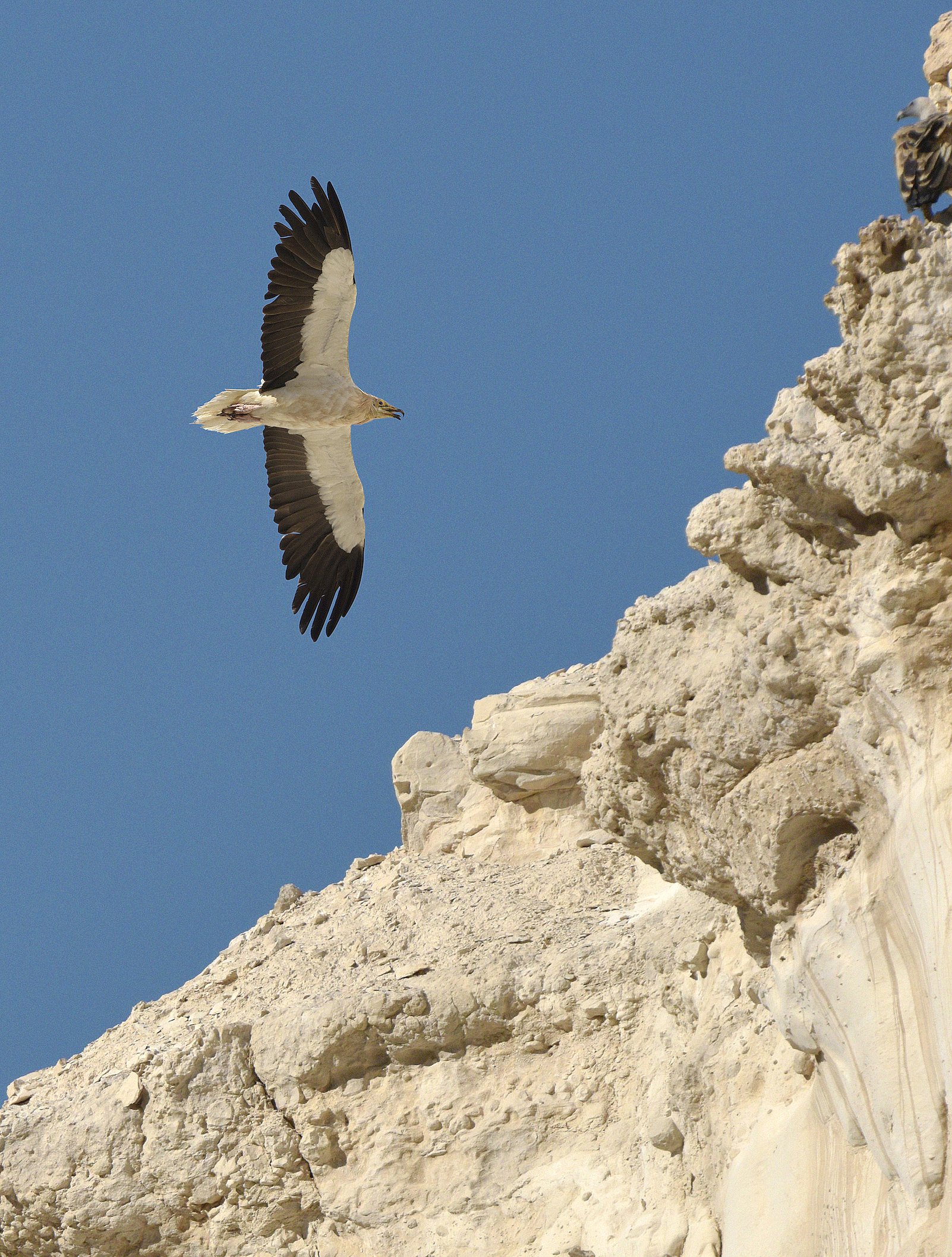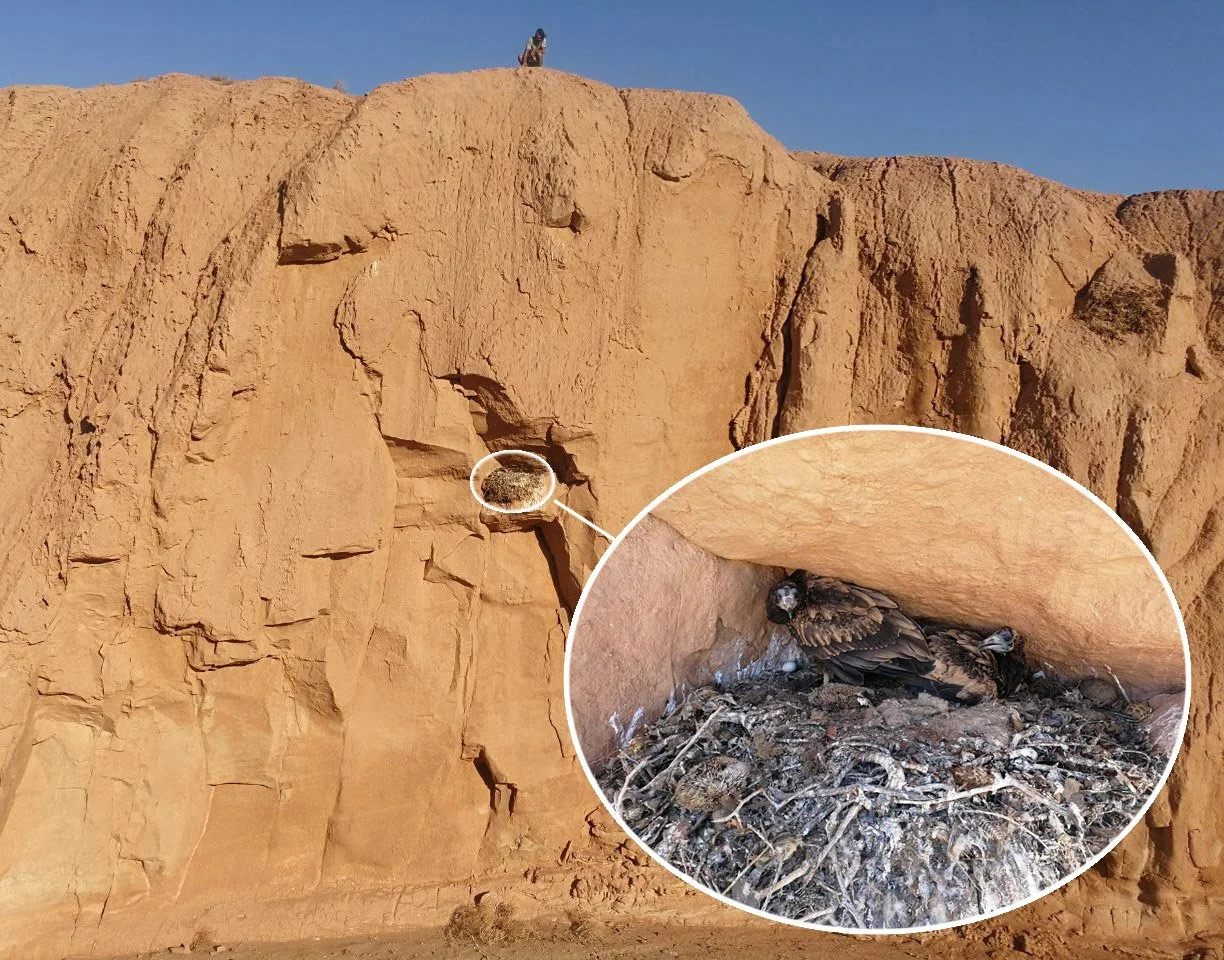Conservation of Egyptian Vultures in Asia - a collaboration with the Hawk Conservancy Trust
Birds on the Brink is pleased to help fund research aimed at understanding the threats faced by migratory populations of Egyptian Vultures. We have sponsored two GPS satellite tags, which will help unravel the routes these birds follow on migration, and the challenges to survival they face. Title image ©Klaus Bjerre/Birds on the Brink
Above: adult Egyptian Vulture, Kazakhstan. Photo ©Paul Sterry/Birds on the Brink
The project is run by Dr Robert Burnside (University of East Anglia), Dr Vladimir Dobrev (Bulgarian Society for Protection of Birds), Anna Ten and Valentin Soldatov (Institute of Zoology, Uzbekistan). The Hawk Conservancy Trust (HCT) supports the project by providing satellite tags for the birds and in turn Birds on the Brink have given financial support for the project to HCT.
Here, Dr Campbell Murn from the Hawk Conservancy Trust paints a background picture to the initiative:
‘Migration is one of the most dangerous times for birds, and populations of many migratory species are in rapid decline. This is the case for the globally Endangered Egyptian Vulture Neophron percnopterus, the only truly migratory Old World vulture.
There are two distinct populations of Egyptian Vulture, one across Africa, the Middle East and Europe and the other in central and south Asia. They are relatively well studied in Europe and Africa, whilst in Asia the population status is poorly understood. Their migration routes and wintering sites have also never been studied before in central Asia. This project is based in Uzbekistan where there are estimated to be only 135 breeding pairs of Egyptian Vultures with the species listed in the national Uzbekistan Red Data Book.
Migrating birds often encounter different threats across the different countries and regions they traverse, creating substantial challenges for organising and carrying out conservation actions. Threats can be found across Egyptian Vulture breeding grounds, in wintering areas and along their migration routes. Very little is known about the threats to those Egyptian Vultures that migrate in central Asia.’
Above: Egyptian Vultures often roost and nest on rugged cliffs. Photo ©Paul Sterry/Birds on the Brink.
Campbell went on to outline the aims and objectives of the project:
· To identify the migration routes and wintering sites used by Egyptian Vultures breeding in Central Asia as an aid to planning their conservation.
· To carry out population surveys to address the gaps in knowledge about the population status in Central Asia and specifically the breeding population size and productivity in Uzbekistan.
· To develop conservation plans for the species.
· To identify the threats Egyptian Vultures face in their breeding grounds in Uzbekistan, during their migration and in their wintering grounds.
Above: The nest of Uzbek siblings Timur and Bukhara, illustrating the challenging nature of Egyptian Vulture breeding locations. Photo ©Dr Vladimir Dobrev.
Campbell continued: ‘The juvenile vulture Timur has turned out to be one of the most adventurous of all the birds tracked so far, with his migration route going initially to the Arabian Sea, then around the Persian Gulf and then to the south-western corner of Yemen at the mouth of Red Sea. This is the first glimpse that eastern and western populations of Egyptian Vultures may be more closely linked than first thought.’
Above: The adult vulture Sofia was trapped and satellite-tagged at one of the dump sites in Uzbekistan in 2022. She has since revealed her migration route from Uzbekistan to between Bikaner and Jaisalmer in Rajasthan. The vultures shown here were photographed several years ago at Bikaner and might well have been Uzbek birds, and maybe even Sofia’s ancestors. Photos ©Paul Sterry/Birds on the Brink
Campbell told Birds on the Brink: ‘The team has tagged 12 Egyptian Vultures since the project started in 2021, and 2023 was the first year that colleagues from Kazakhstan visited the Uzbek field site to share knowledge and also learn new skills.’
Above: Dr Vladimir Dobrev releasing Sofia the adult Egyptian Vulture after she had been fitted with a GPS satellite tag. Photo ©Vladimir Dobrev.





